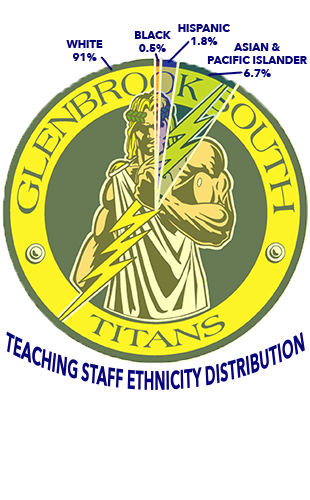English departments consider implications of classroom diversity
December 16, 2016
GBN, GBS and feeder middle school English departments gathered for a professional development meeting about classroom diversity on Nov. 4.
Dr. Tom Kucharski, English instructional supervisor, says this year’s event sought to create a more inclusive classroom environment. Initially, it was to focus on curriculum diversity but changed after talking to minority students—the Asian population at GBN and the Latino population at GBS.
“We were really looking at, as a person who [doesn’t come] from […] the normal, white, suburban perspective – how are you doing?” Kucharski said. “The students really brought [their different experiences forward] pretty clearly and that meant we decided to emphasize the idea of classroom environment during our day.”
Kucharski’s descriptions of exclusivity were similar to senior Elaina Perez’s situation after transferring to GBS from living in Roger’s Park and attending a high school in Maryland. Perez described both as “extremely diverse” —a contrast to her GBS experience.
“I remember entering my [sophomore Honors English] class,” Perez said. “It was my first class of the year […] and I [looked] around and said, ‘Okay, I’m the only Hispanic person here, but it’s okay.’”
According to Kucharski, teachers read aloud those interviews and anonymously gathered student accounts. English teacher Debbie Cohen, a member of the meeting’s planning committee for seven years, helped transcribe them.
“What came up over and over again [in interviews] was just how important it is for students to feel connected to their teachers and to each other,” Cohen said. “I like to think that I’m always thinking [about making students feel included], but it made me more mindful that the most important thing that goes on in the classroom is […] quality of interpersonal experience.”
The meeting also included a presentation from Dr. David Stovall, a professor of Educational Policy and African-American Studies at the University of Illinois at Chicago. Cohen said Stovall spoke about matters such as the difference between education and school, using disagreements to advance thinking and including students as trusted participants in learning.
“I think my capacity to speak on how I try to engage those things and how I struggle with [them] resonated with the folks at the talks,” Stovall said.
According to Stovall, he talked to teachers about engaging multiple perspectives in order to remedy the fact that minority students experience school differently due to the primarily white school population.
“Multiple perspectives [doesn’t mean] the end all be all speaking for minoritized groups [and] people of color, but […] challenging what is thought of as normative,” Stovall said. “When students see that [effort], [it’s] a sign someone is willing to engage […] in [their] issues and concerns.”
Stovall says that attendees were interested in how he developed his sentiments and saw willingness from some teachers to continue toward classroom inclusivity for all students.
“The efforts that the district is putting forward to engage students of color is one that should be noted but is work that has to be [continued],” Stovall said.



